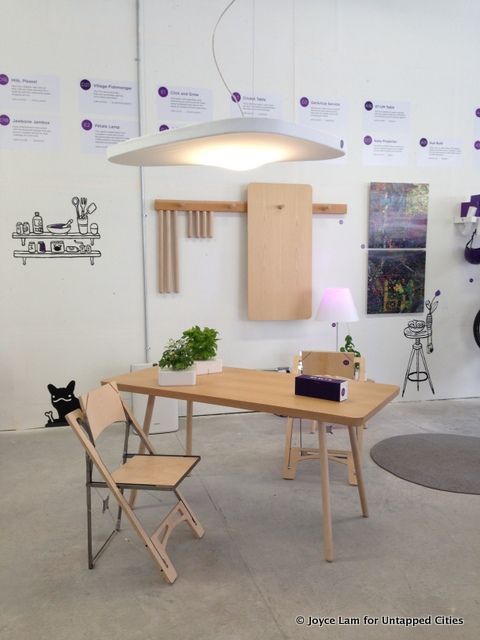How to Make a Subway Map with John Tauranac
Hear from an author and map designer who has been creating maps of the NYC subway, officially and unofficially, for over forty years!


With the first prefabricated apartment in NYC going and city-sponsored micro-apartment competitions, New York City is actively examining the changing landscape of urban living. Presented by PSFK.com in a residential building in Chelsea, The Future of Home Living pop-up exhibition displays over 70 innovative products and designs that could potentially transform how we live in the city. And it looks like things are going to become more customizable, more efficient and more sustainable.
According to a report by PSFK Labs, the project “seeks to uncover the emerging behaviors, technologies, products, services and initiatives that are driving the evolution of the home.” The exhibit looks at three themes, the first “Adaptive” looks at customizable solutions for the home based on the urban dweller’s everyday needs. People can control the color, intensity and directionality of light in their home through lightscaping, and have the apartment take care of itself through the use of responsive systems.
Space-saving and customizable home furnishings may also soon respond to what people plan to do with their home at any given part of the day. Working from home? This Ulisse Desk Bed can be transformed into a workspace during the day, and a queen-size bed at night. The designers, Resource Furniture, claim the average size of a new home built in the U.S. has been decreasing since 2007, and therefore multipurpose furnishings like the desk bed are necessary to accommodate smaller spaces.

Resource Furniture’s Pocket Chairs and Cricket Table can be folded for storage.
“On-Demand” was the second theme explored by the The Future of Home Living, with concepts like community outsourcing, DIY kits and entertainment clouds, suggesting a heavier reliance on technology to get things done. Available to try at the exhibit was the app Wun Wun, which allows New Yorkers to outsource local “helpers” who can help perform nearly any task imaginable. With Google’s recent Shopping Express initiative, the rise of same-day delivery might actually be here to stay this time (compared to the early failures of one hour delivery services like UrbanFetch and Kozmo in the dot-com era). The exhibit featured services like HelloFresh and Get Art Up , both which also aim to help homemakers break out of routine behaviors by delivering grocery and art to their door.

Back To the Roots’ Aquafarm, a self-cleaning fish tank that also grows food.
The Future of Home Living’s final theme, “Equilibrium,” promotes sustainability and well-being within the boundaries of an apartment. Many of the designers aimed to create gadgets that will transform apartments into a place of personal renewal, to combat the stress of city living. These solutions included home farming, soundproof interiors and sensor technologies that can help people make smarter decisions about their daily lives.
Compact gardening is made possible through products like the Aquafarm, a self-cleaning fish tank that also supports an attached herb garden. Natural filtering systems like Permasorb, an air purifying wallpaper, Andrea Air Filter which speeds the process of plant filtration, and a water-saving EcoVea Shower were also featured.
The future seems bright for the future of home living, but will some of the high price tags attached to these unique ideas prevent some from living in “a clean, efficient and responsive space that can flexibly conform to the every changing needs of its residents”? Only time will tell what limits will hinder the evolution of the home.
The Future of Home Living runs until August 16th. Located on the ground floor of a residential building on 101 West 15th street, the exhibition space is a collaboration between PSFK and the building owners. Admission is free.
Subscribe to our newsletter